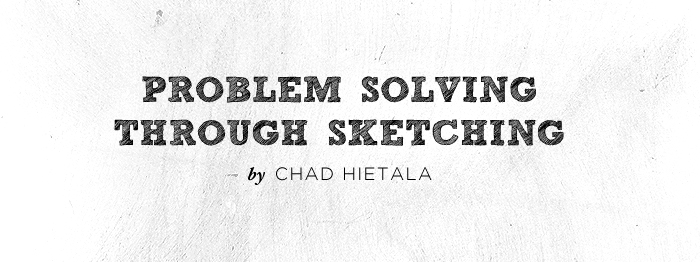Problem Solving Through Sketching
I’ll be the first to say that I’m not an illustrator, nor am I a classically trained designer, however that does not mean that I can’t draw. Humans by nature are visual thinkers, which historically can be shown by the cave paintings in Lascaux in France. Drawing allows us to present the ideas in our head to others on paper.
In meetings it’s not unusual for me to sketch how a problem can be resolved or how to show a problem. I think visually working through a problem of any sort can reveal at a high level how to overcome those problems. Too often I hear “I can’t draw.” This is garbage. If you can draw a line, a circle, a rectangle, or a triangle you can visually communicate your idea. Just because you can’t draw to the likings of an artist, it doesn’t mean you can’t communicate your thought process. You weren’t a prodigy when you drew as a child, so why now the big fuss over some sketches that realistically may help you solve a problem faster?
Bringing concept to context
So let’s say we are trying to figure out a way to give people directions to the university via the web. It’s easy to make a story around this idea but rather than type it, I can visually communicate the process through pictures.
In this case, I can see what features need to be created to give Joe directions. I would need to create a means of finding the map page, a map page that allowed Joe to enter his address, his destination, submit, a results page, and a means of printing those directions. The image helps set the very basic framework for how to tackle the problem of providing someone directions to the university.
Although the above example is pretty well-established in the way we get directions online, it shows how you can directly communicate a thought process visually.
Conclusion
Basically what I’m getting at is this: don’t rule out drawing something to get a grasp of a problem or the magnitude of it. Don’t be afraid to use a white board or the back of a napkin to show what you are thinking. More likely than not people will have a better sense of what you are talking about.




